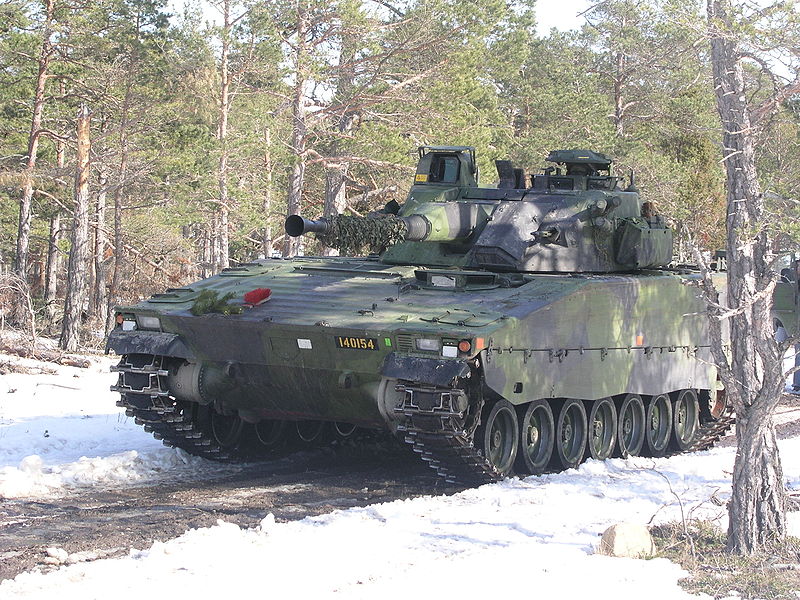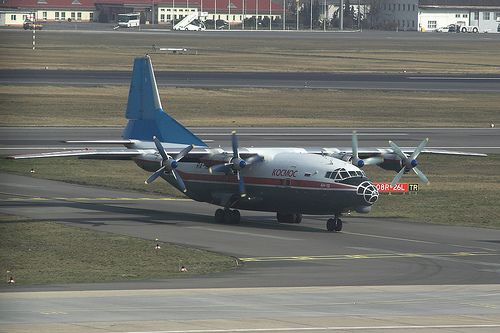(NSI News Source Info) ÖRNSKÖLDSVIK, Sweden - January 13, 2009: BAE Systems has delivered the 1,000 CV90 Infantry Fighting Vehicle, marking a milestone for a vehicle that has been in production since 1991.
CV90, an agile, multi-role combat vehicle with all-target capabilities ranging from small targets to larger threats, has been continuously developed to meet the challenges of today’s threat scenario.  The Combat Vehicle 90 (CV90) or Stridsfordon 90 (Strf 90) is a Swedish infantry fighting vehicle designed by Hägglunds/Bofors and currently produced by BAE Systems Hägglunds.
The Combat Vehicle 90 (CV90) or Stridsfordon 90 (Strf 90) is a Swedish infantry fighting vehicle designed by Hägglunds/Bofors and currently produced by BAE Systems Hägglunds.
 The Combat Vehicle 90 (CV90) or Stridsfordon 90 (Strf 90) is a Swedish infantry fighting vehicle designed by Hägglunds/Bofors and currently produced by BAE Systems Hägglunds.
The Combat Vehicle 90 (CV90) or Stridsfordon 90 (Strf 90) is a Swedish infantry fighting vehicle designed by Hägglunds/Bofors and currently produced by BAE Systems Hägglunds.The 1,000th vehicle was delivered to the Netherlands, which has a contract in place for 184 CV9035 MkIII.
The CV90 is also in service with the armies in Sweden, Norway, Denmark, Switzerland and Finland and is and has been deployed with UN and NATO operations abroad.
“CV90 has been such a success globally due to its flexibility and upgrade potential for the past 17 years,” said Tommy Gustafsson-Rask, marketing and sales director for BAE Systems. “Initial CV90 designs were focused towards providing high mobility and high firepower, but more recent designs have focused on high survivability in order to adapt to more recent threats. Our track record of successful offset programs, connected to the CV90, is a testament to our understanding of our customers and the needs of their countries industrial bases.”
There have been a number of design upgrades over the years to improve flexibility of the vehicle and increase survivability and other capabilities, the most recent version being the MkIII.
The large fleet of vehicles around the globe gives existing and new customers considerable advantages such as a broader base for cost-sharing of future upgrades and spare parts and international interoperability.
Production of current CV90 contracts end in 2011 with future versions of the vehicle currently in development.
BAE Systems is the premier global defence and aerospace company delivering a full range of products and services for air, land and naval forces, as well as advanced electronics, information technology solutions and customer support services. With 100,000 employees worldwide, BAE Systems' sales exceeded £15.7 billion (US$ $31.4 billion) in 2007.




 Corp said on Monday its FedEx Express unit exercised options to buy 15 more Boeing 777 freighters,worth $3.75 billion at list prices, but it deferred delivery of some of the planes as the U.S. economy faces a bleak outlook.
The giant package delivery company now has 30 of Boeing's 777 Freighters on order, and holds an option to purchase a further 15.
In an update of a 2006 purchase agreement, Boeing is set to deliver four 777s in FedEx's fiscal 2010, four in fiscal 2011, three in each subsequent fiscal year through fiscal 2018, and the remaining one in fiscal 2019.
As a result of the extra orders and the rescheduled delivery dates, FedEx said its capital expenditures are expected to increase by about $15 million in fiscal 2009 and by about $2.75 billion over the following 10 fiscal years.
Last month FedEx cut pay for all salaried personnel by 5 percent and suspended retirement plan contributions as it looked to slash costs in the face of a global economic slowdown.
Corp said on Monday its FedEx Express unit exercised options to buy 15 more Boeing 777 freighters,worth $3.75 billion at list prices, but it deferred delivery of some of the planes as the U.S. economy faces a bleak outlook.
The giant package delivery company now has 30 of Boeing's 777 Freighters on order, and holds an option to purchase a further 15.
In an update of a 2006 purchase agreement, Boeing is set to deliver four 777s in FedEx's fiscal 2010, four in fiscal 2011, three in each subsequent fiscal year through fiscal 2018, and the remaining one in fiscal 2019.
As a result of the extra orders and the rescheduled delivery dates, FedEx said its capital expenditures are expected to increase by about $15 million in fiscal 2009 and by about $2.75 billion over the following 10 fiscal years.
Last month FedEx cut pay for all salaried personnel by 5 percent and suspended retirement plan contributions as it looked to slash costs in the face of a global economic slowdown.





















